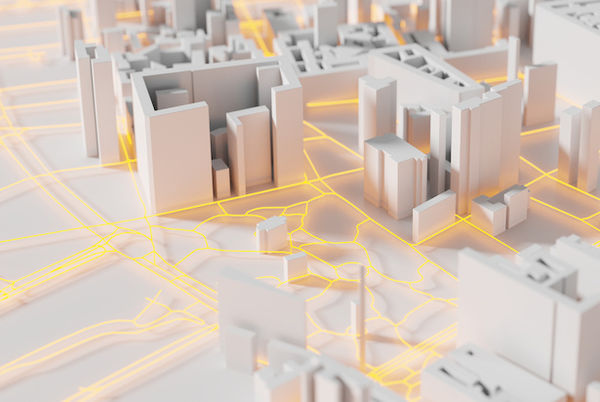Smart Building 2030: Business Models for the Security Technology of the Future

In our latest trend analysis, “Smart Building 2030: Business Models for the Security Technology of the Future,” our futurists Maria Lübcke and Michael Carl describe the four phases on the road to a future of autonomous self-learning buildings.
In 2030, the Internet of Everything will shape our living and working environments. Those who are still talking about the Internet of Things today – many devices are connected, others aren’t – have to realize that the development will rapidly pass this intermediate stage. All objects that can obtain new uses through connectivity will become internet devices. Every object will eventually become a data point with its own IP address – not only food, clothes, and cars, but also machines, storage facilities, offices, buildings, and even entire cities will act in concert, leading to an entirely new conception of function and security.
Smart devices will also gradually become a standard element of smart buildings. Intelligent windows will control the permeability of sunlight and increase building efficiency. Intelligent floors will sense human movement and control visitor flow. Intelligent walls will serve as information screens. In short: More and more parts of the building will be connected to the internet, thus offering added value for investors, operators, and visitors. In the future, traditional security technology such as fire detectors, cameras, or access controls will be connected to the internet as well, thus providing increased security both for buildings and their human inhabitants.
Sensors will become more powerful – and energy self-sufficient
The central element of smart devices are sensors. In the future, sensors will collect very large amounts of data within a building and its surroundings. One example: visitors’ voices and facial expressions can be precisely measured and analyzed.
This makes the ties between the purpose of the sensor and the point of installation obsolete. Sensors which have previously only been used in smoke detectors could be also installed in other objects. Why shouldn’t radiators become fire detectors? Or floors and door frames use dynamic data to detect dangerous situations while the lights analyze air quality?
Buildings will become autonomous
The real potential of smart buildings lies in the combination of data collection, data analysis, and the use of AI. Only when we can utilize data with sufficient intelligence will smart buildings offer sustainable added value for operators, tenants, and users. While the focus of building technology providers has so far largely been on products, it will increasingly shift towards customers in the future. Technology, data collection, and data analysis together will create added value for customers.
Providers’ focus on building technology will shift from the product to the customer. In the future, technology, data collection, and data analysis will be centered on providing added value to the customer – a development which will find its peak in predictive security and predictive maintenance.
Today’s functional buildings will become completely autonomous, self-learning smart buildings of the future by 2030 over the course of four evolutionary phases. The description of these four phases – and of the business models that can be found in each – is the focus of this trend analysis, published by the 2b AHEAD ThinkTank with the support of Hekatron and Schlentzek & Kühn. The full text of “Smart Building 2030” is now available to you here as a free download.